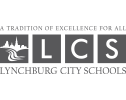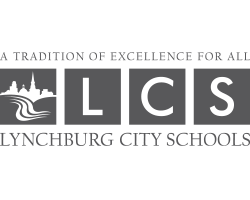These scenarios are only potential paths forward and do not represent final recommendations.
Scenario 1
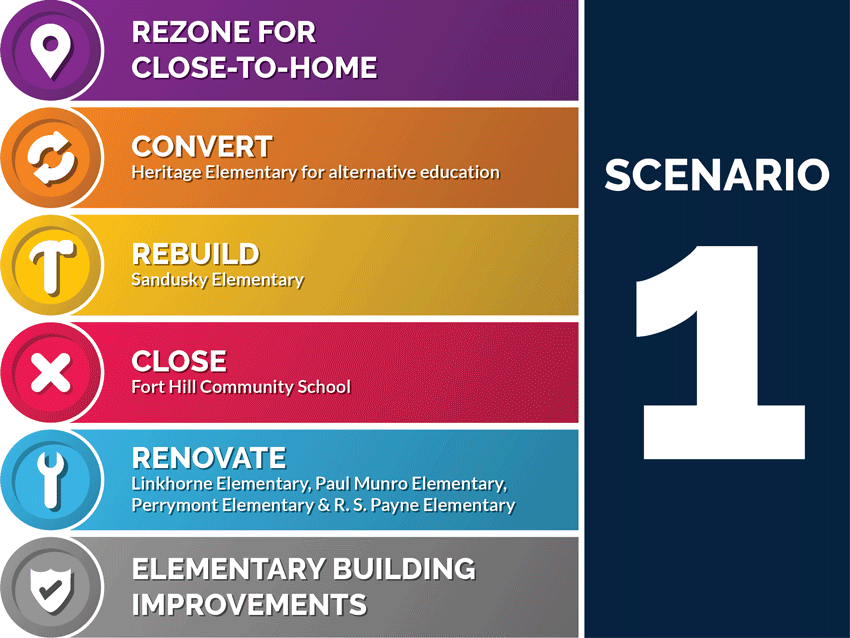
In Scenario 1, current attendance zones would be extensively overhauled to simplify transportation. This would primarily impact elementary attendance zones and provide considerable operational savings.
To support full-day alternative education services for middle and high school students, Heritage Elementary would be converted to an Alternative Program Academy. This location would be ideal given its proximity, yet physical separation from Heritage High School. With the new Alternative Program Academy, Fort Hill Community School would be closed.
Since Heritage Elementary would be repurposed, Sandusky Elementary would need to be rebuilt to accommodate a portion of current Heritage Elementary students and to balance enrollment from district wide rezoning. This new school building would also allow for optional Pre-K expansion.
Linkhorne, Paul Munro, Perrymont, and R. S. Payne elementary schools would be renovated to meet current and future needs of students. All other elementary schools would require building improvements to address safety and maintenance needs.
Under this scenario elementary utilization increases to +/- 89%.
For a more in-depth look at Scenario 1 and its potential outcomes, please view the Scenario document provided by MGT.
| Scenario 1 Community Benefits |
|
| Scenario 1 Community Trade-offs |
|
Scenario 2

In Scenario 2, current attendance zones would also be overhauled. Dearington Elementary would be closed or repurposed to support expanded Pre-K programming. As in Scenario 1, Linkhorne, Paul Munro, Perrymont, and R. S. Payne elementary schools would be renovated to meet current and future needs of students. All other elementary schools—including Heritage and Sandusky in this scenario— would require building improvements to address safety and maintenance needs.
Under this scenario elementary utilization increases to +/- 84%.
For a more in-depth look at Scenario 2 and its potential outcomes, please view the Scenario document provided by MGT.
| Scenario 2 Community Benefits |
|
| Scenario 2 Community Trade-offs |
|
Scenario 3
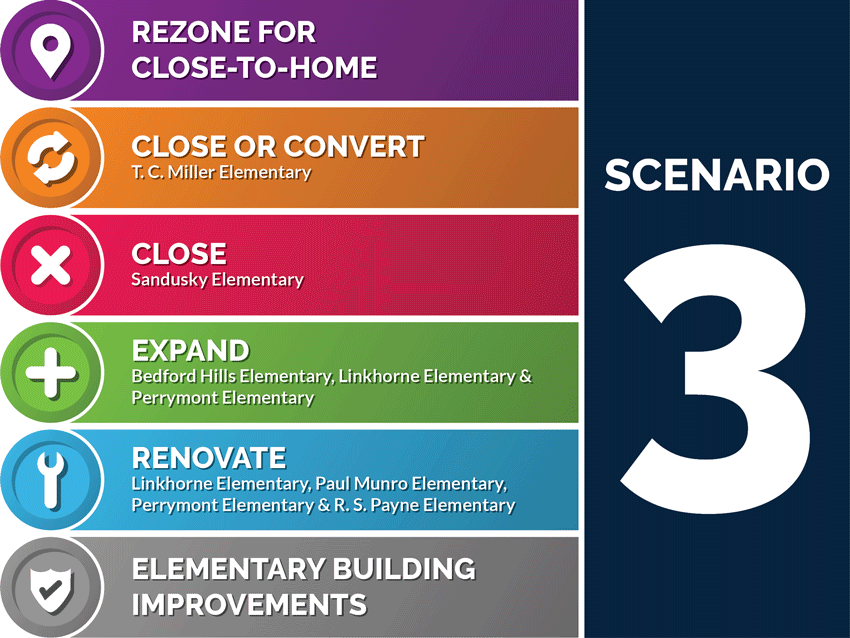
In Scenario 3, current attendance zones would again be overhauled. T. C. Miller Elementary would be closed or repurposed to support expanded Pre-K programming.
In this scenario, Sandusky Elementary would also close, which would require expansions at other elementary school sites to accommodate shifting student populations. Expansions would be required at Bedford Hills, Linkhorne, and Perrymont elementary schools. Linkhorne and Perrymont would also need additional renovations to meet student needs, as is the case at Paul Munro and R.S. Payne elementary schools.
All other elementary schools not already specified in this scenario would require building improvements to address safety and maintenance needs.
Under this scenario elementary utilization increases to +/- 84% with expansion at other sites. Without expansion utilization increases to +/- 92%.
For a more in-depth look at Scenario 3 and its potential outcomes, please view the Scenario document provided by MGT.
| Scenario 3 Community Benefits |
|
| Scenario 3 Community Trade-offs |
|
Scenario 4
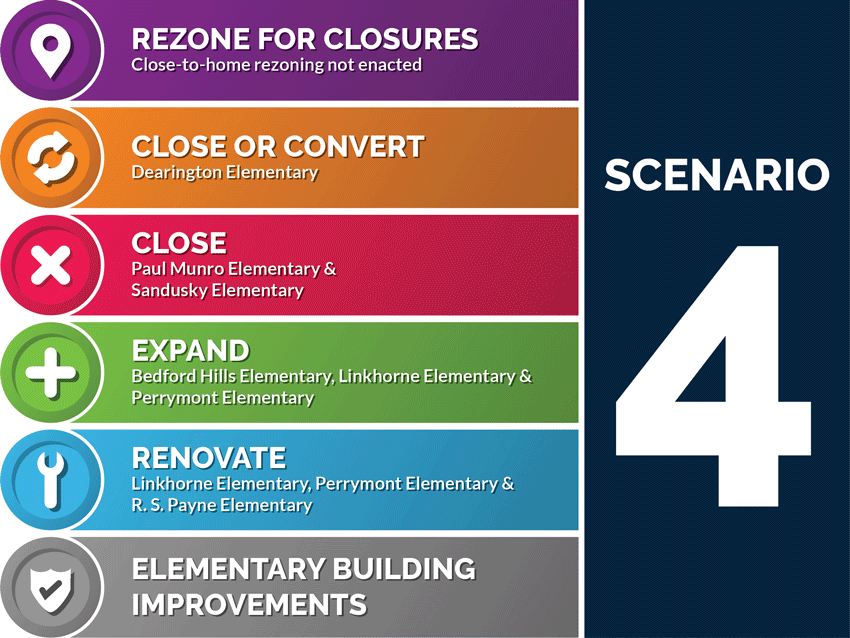
In Scenario 4, close-to-home rezoning would not be enacted; however, attendance zones would shift based on school closures. Dearington Elementary would be closed or repurposed to support expanded Pre-K programming.
In this scenario, Paul Munro and Sandusky elementary schools would also close, which would require expansions at other sites. Like in Scenario 3, expansions would be required at Bedford Hills, Linkhorne, and Perrymont elementary schools. Linkhorne and Perrymont would also need additional renovations to meet student needs, as is the case at R.S. Payne.
All other elementary schools not already specified in this scenario would require building improvements to address safety and maintenance needs.
Under this scenario elementary utilization increases to +/- 84% with expansion at other sites. Without expansion utilization increases to +/- 98%.
For a more in-depth look at Scenario 4 and its potential outcomes, please view the Scenario document provided by MGT.
| Scenario 4 Community Benefits |
|
| Scenario 4 Community Trade-offs |
|
